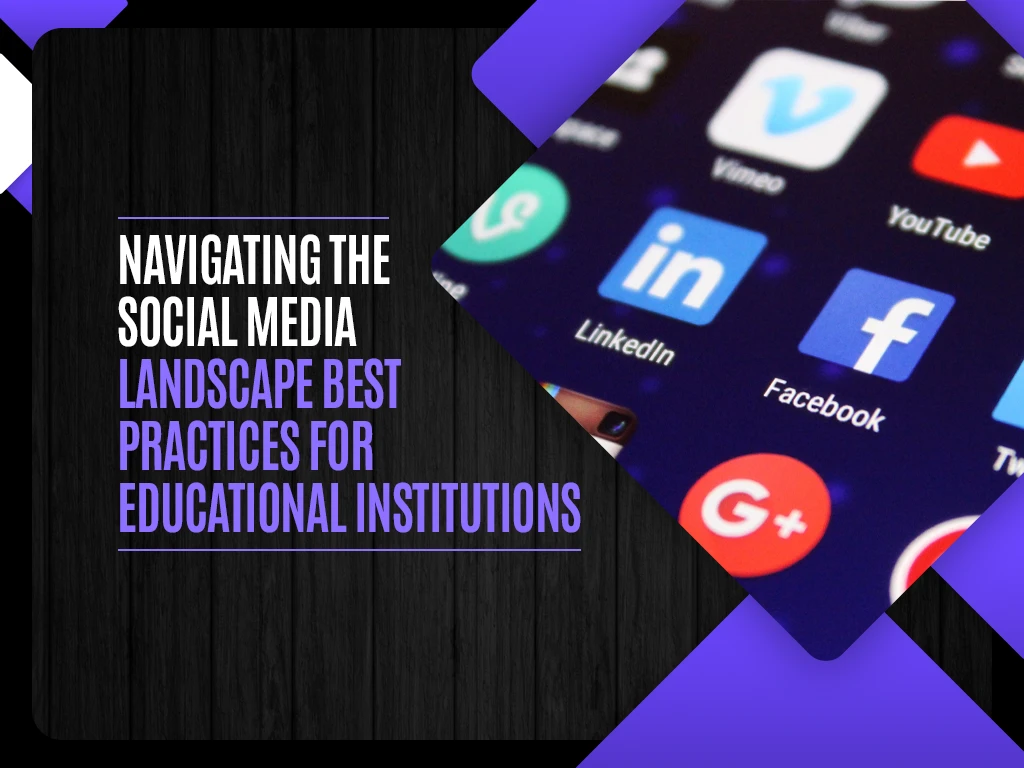Navigating the Social Media Landscape: Best Practices for Educational Institutions

Let’s jump into a really important topic: How educational institutions can best use social media. It’s more than just sharing pictures or news, believe it or not. Social media is a big deal. It helps connect students, teachers, and parents. It’s great for sharing school news, student achievements, and even study materials. But, it’s not always easy to use it right. You have to know the rules and how to avoid problems.
This article is like a guide. It will help schools and colleges navigate social media. We’ll cover the best ways to use it, smart tips, and the important things to do (and not to do). Whether you’re new to social media or have been using it for a while, this guide has helpful tips for everyone. Let’s start learning how to use social media effectively in education.
As we move forward in our guide on social media for educational institutions, let’s shift our focus to a crucial aspect: essays and a social media essay, in particular. In this context, essays become a powerful tool. They encourage students to critically think about the role of social media, its benefits, and its challenges. Writing a social media essay, for example, is a chance for students to engage with real-world issues, applying what they learn to a topic that’s relevant and timely.
Social Media and Educational Institutions
Can social media actually be a secret weapon for educational institutions? Hell yes, it can. Let’s chop this up into digestible pieces.
First off, social media is like the ultimate connector. It’s not just about posting selfies or food pics; it’s about linking up students, teachers, and even the parents. Imagine a world where everyone’s in the loop, instantly. That’s social media in education for you.
Then, there’s the whole newsflash thing. Schools and colleges have stuff to say – changes in schedules, upcoming events, you name it. Social media is like their megaphone, broadcasting updates faster than you can scroll through your feed.
Now, let’s talk content. Teachers dishing out educational goodies like articles or mind-blowing videos on Instagram or YT? That’s gold. It takes learning out of the boring classroom and into the cool digital world. It’s learning, but with a ‘like’ button.
Engagement – this is where it gets really interesting. Students aren’t just passive listeners anymore. They’re chipping in on discussions, collaborating on projects, and flaunting their achievements, all on the Internet. It’s like turning learning into a 24/7, interactive buzz.
Feedback and support, too, get a turbo boost. Got a burning question at midnight or need help with homework? Shoot a message on the web. It’s fast, it’s easy, and it beats waiting till Monday to ask your teacher.
And let’s not forget about hyping up all the cool school stuff – the sports days, the drama club, the science fair. Social media turns these events into the talk of the town, building a sense of community that’s hard to beat.
Elevating Content with Technology
When crafting content, striking a balance is vital. Incorporate a mix of essential announcements and vibrant school life stories. Embrace a variety of formats – videos (using editing tools like Adobe Premiere Pro), infographics (created with tools like Visme), and interactive live sessions (through platforms like Zoom or Instagram Live). Scheduling tools such as Hootsuite or Later are instrumental in planning and executing a consistent content strategy.
Fostering Digital Community Engagement
Engagement is the lifeblood of social media. Respond promptly to comments using tools like Agorapulse, which can streamline the management of multiple accounts. Employ listening platforms like Brand24 to monitor and engage in conversations about your institution across the web. This proactive approach cultivates a thriving online community.
Adaptability and Responsiveness
Create a flexible content calendar using project management tools like Asana or Airtable. These platforms offer versatility to adjust to spontaneous events or trending discussions, ensuring your content remains topical and relevant.
Prioritizing Digital Safety
In the realm of digital safety, establish robust guidelines for content, especially concerning images of students and staff. Utilize privacy setting features on platforms like Facebook and Instagram to control content visibility. Regular digital safety workshops for staff and students can foster a culture of responsible social media usage.
Continuous Improvement through Analytics
Regularly evaluate your social media strategy with advanced tools such as Sprout Social or Moz. These platforms offer comprehensive analytics to refine content strategies. Additionally, conducting community surveys can offer direct feedback, ensuring your social media efforts resonate with your audience.
Final Thoughts: Integrating Social Media into Educational Practices
As we wrap up, it’s important to recognize how these digital strategies can intertwine with traditional academic practices. Social media can complement the more conventional aspects of education, such as grading college papers or providing teacher comments for students’ writing.
Imagine a scenario where teachers share tips on social media. Those can be about crafting excellent essays or dissecting complex problems. This way, they are adding another layer to the feedback they provide in the classroom. This approach could be akin to a modern-day spell for good grades, offering students insights and guidance in a format they engage with daily.
Moreover, the idea of a student contract for grades could be transformed through social media. Platforms could be used to track and share progress in a more dynamic and interactive way. It could turn the often-dreaded conversation about grades into a more positive and ongoing dialogue. As a result, the process will be more transparent and inclusive.

